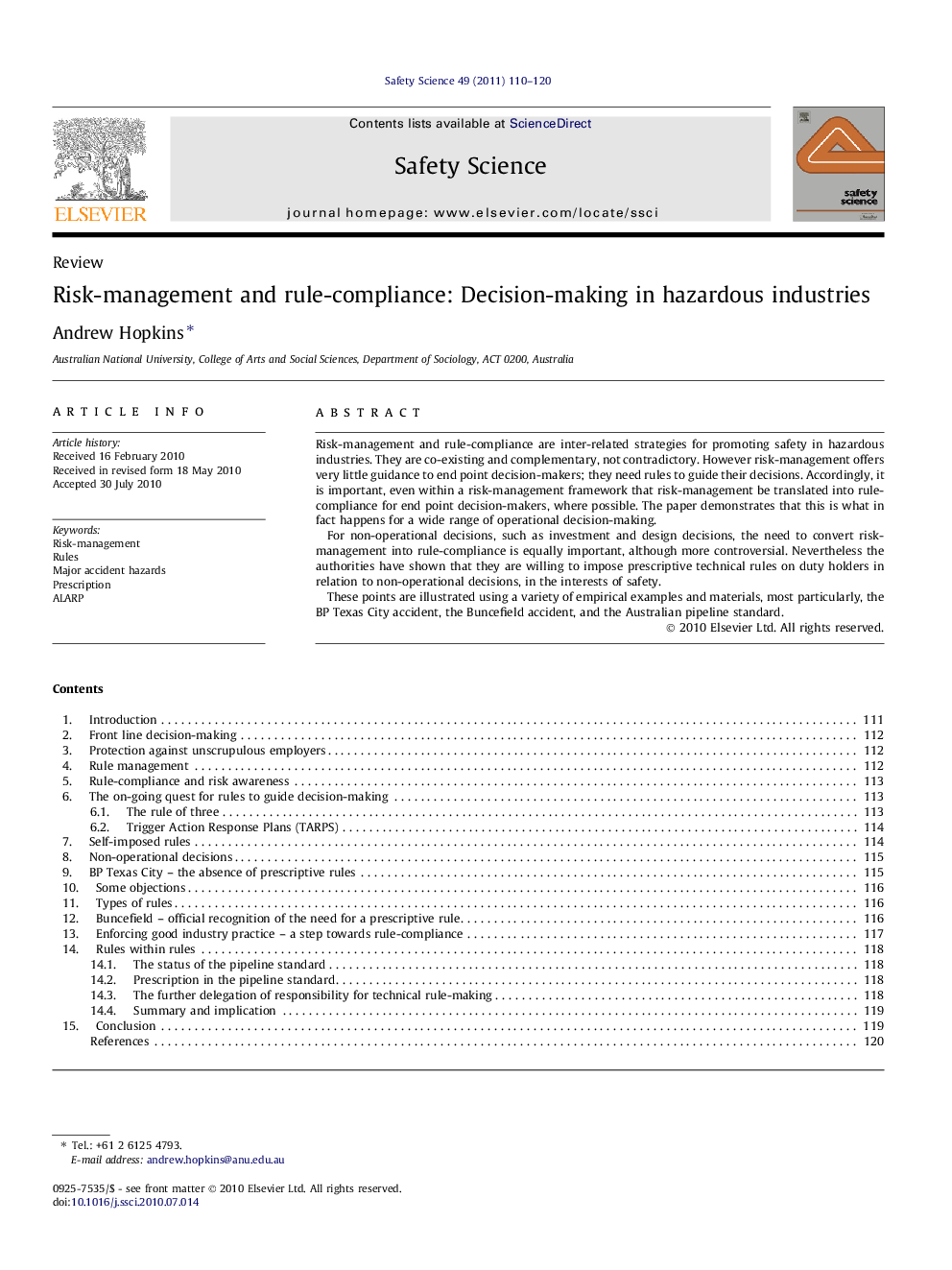| Article ID | Journal | Published Year | Pages | File Type |
|---|---|---|---|---|
| 590107 | Safety Science | 2011 | 11 Pages |
Risk-management and rule-compliance are inter-related strategies for promoting safety in hazardous industries. They are co-existing and complementary, not contradictory. However risk-management offers very little guidance to end point decision-makers; they need rules to guide their decisions. Accordingly, it is important, even within a risk-management framework that risk-management be translated into rule-compliance for end point decision-makers, where possible. The paper demonstrates that this is what in fact happens for a wide range of operational decision-making.For non-operational decisions, such as investment and design decisions, the need to convert risk-management into rule-compliance is equally important, although more controversial. Nevertheless the authorities have shown that they are willing to impose prescriptive technical rules on duty holders in relation to non-operational decisions, in the interests of safety.These points are illustrated using a variety of empirical examples and materials, most particularly, the BP Texas City accident, the Buncefield accident, and the Australian pipeline standard.
Research highlights► Safety depends on organizations formulating relevant rules with which workers must then comply. ► Risk management should culminate in rules, where possible. ► Regulators in UK are interpreting ALARP as compliance with industry standards.
